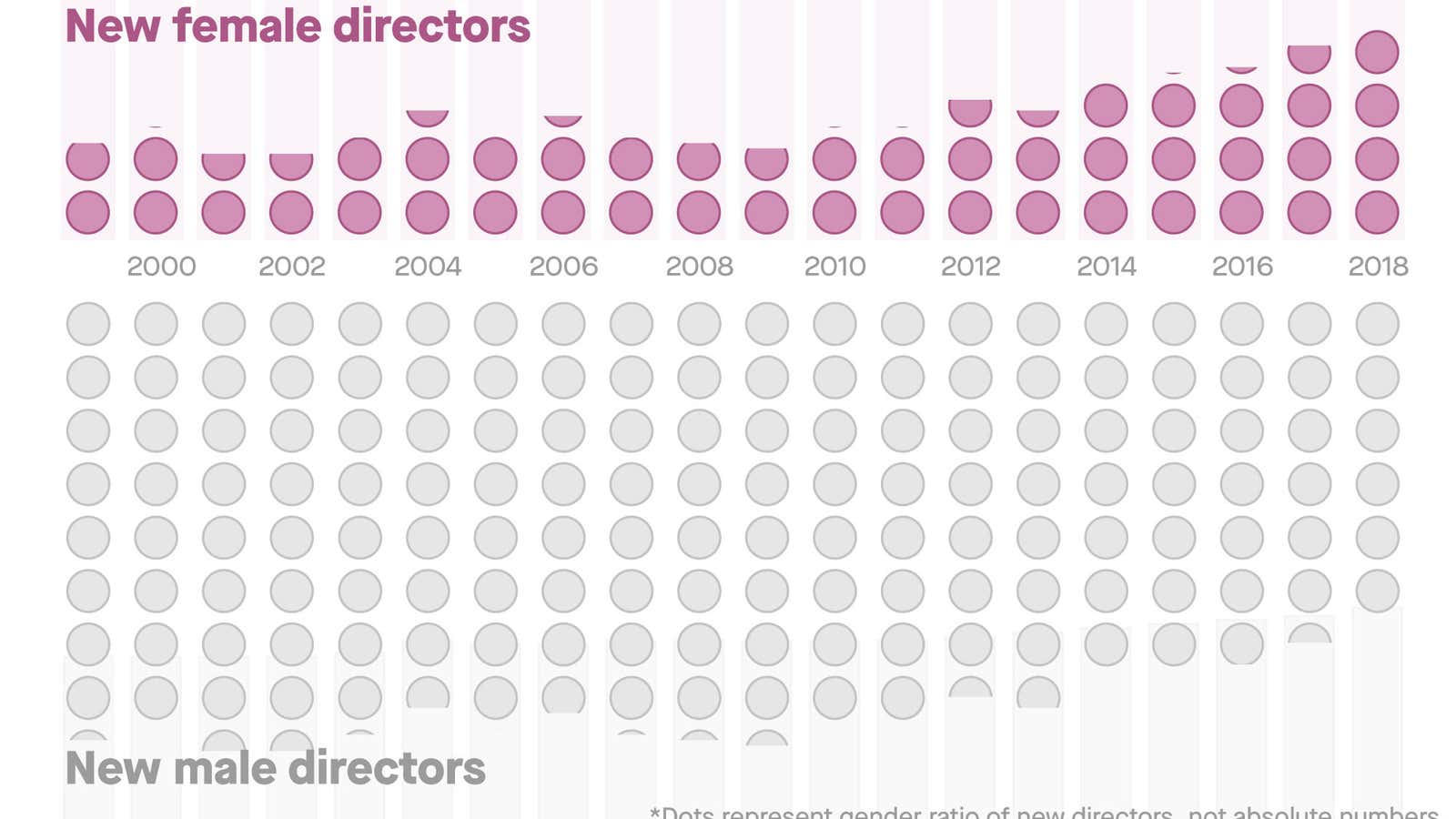A “typical company board” is still a group of old men. Last year the average board of a S&P500 company had 11 members with an average age of 63, only two of whom were women.
Boards repeatedly rate women as a top priority when reviewing potential candidates, according to annual surveys conducted by Spencer Stuart. But their progress on gender diversity has been slow. S&P500 corporate boards on average added one woman over the last decade, with the share of women directors rising from 12% to 24%.
Boards are actually hiring women to fill open director roles much more often than they were five years ago. About 40% of the incoming S&P500 board directors in 2018 were women.
But women still aren’t getting an equal share of the board seats. One problem is that increasing the share of women on company boards requires more than just hiring more women when a seat is available.
The effort to hire women is hindered by a low turnover rate
The big hurdle in balancing the board is that the current board directors—disproportionally men—are not retiring.
The turnover rate of the S&P500 boards has been about the same in the two decades, with about 6% to 7% of the directors replaced every year. But boards are getting older.
Boards have been raising mandatory retirement ages, and in some cases abandoning the requirement to retire altogether.
This has allowed some directors who are approaching retirement age to stay on the board longer, resulting in longer tenures and lower turnover rates. An analysis of S&P1500 by Institutional Shareholder Services shows that companies with longer tenures have fewer women directors.
It’s rare for companies to set term limits for members, only 5% of S&P500 did so in 2018, with a majority choosing 15 years. The average tenure of board members was 8.1 years.
The most effective way to increase gender equality, in addition to actively recruiting women, is to ensure a healthy turnover rate, which includes setting a mandatory retirement age and not raising or abandoning it.
